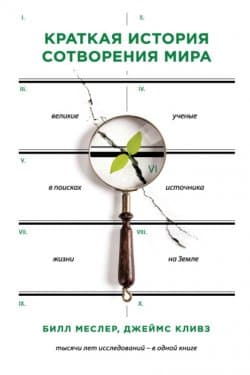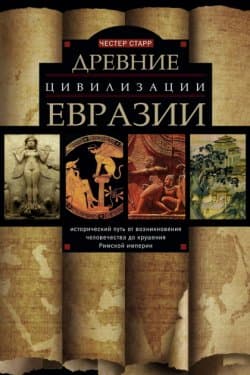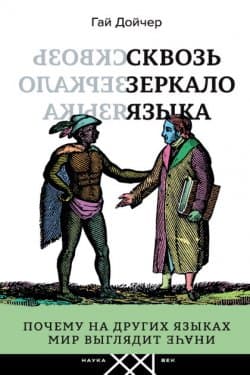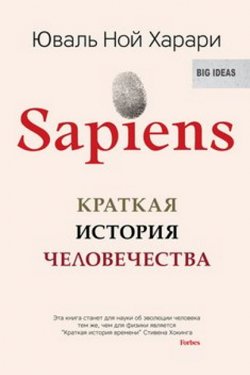Sapiens. Краткая история человечества - Юваль Ной Харари (2011)
-
Год:2011
-
Название:Sapiens. Краткая история человечества
-
Автор:
-
Жанр:
-
Язык:Русский
-
Страниц:231
-
Рейтинг:
-
Ваша оценка:
Homo sapiens сто тысяч лет назад являлся одним из шести видов человека, которые существовали на планете. Этот вид был ничем не примечательным животным, играющим в экосистеме небольшую роль, примерно такую как гориллы, светлячки, медузы. В хозяина мира вид Homo sapiens, около семидесяти тысяч лет назад, превратило загадочное изменение когнитивных способностей. Каким образом человеку разумному удалось покорить мир? Какова судьба других человеческих видов? В какой период и по какой причине возникли государства, религии, деньги? Как появлялись, рушились империи? По какой причине большинство народов ставили мужчин выше женщин? Как капитализм и наука стали в современной эпохе господствующими вероучениями? Люди становились с течением времени счастливее? Каково будущее человечества?
Юваль Харари рассказывает, как исторический ход влиял на общество и действительность вокруг него. Его произведение показывает связь между событиями, произошедшими в прошлом, и проблемами современности, что непременно заставляет читателя пересмотреть все устоявшиеся представления об окружающем мире.
Sapiens. Краткая история человечества - Юваль Ной Харари читать онлайн бесплатно полную версию книги
17 Timothy F. Flannery, The Future Eaters: An Ecological History of the Australasian Lands and Peoples (Port Melbourne, Vic.: Reed Books Australia, 1994); Anthony D. Barnosky et al., ‘Assessing the Causes of Late Pleistocene Extinctions on the Continents’, Science 306:5693 (2004): 70–75; Bary W. Brook and David M. J. S. Bowman, ‘The Uncertain Blitzkrieg of Pleistocene Megafauna’, Journal of Biogeography 31:4 (2004), 517–523; Gifford H. Miller et al., ‘Ecosystem Collapse in Pleistocene Australia and a Human Role in Megafaunal Extinction,’ Science 309:5732 (2005), 287–290; Richard G. Roberts et al., ‘New Ages for the Last Australian Megafauna: Continent Wide Extinction about 46,000 Years Ago’, Science 292:5523 (2001), 1888–1892.
18 Stephen Wroe and Judith Field, ‘A Review of Evidence for a Human Role in the Extinction of Australian Megafauna and an Alternative Explanation, Quaternary Science Reviews 25:21–22 (2006), 2692–2703; Barry W. Brooks et al., ‘Would the Australian Megafauna Have Become Extinct If Humans Had Never Colonised the Continent? Comments on “A Review of the Evidence for a Human Role in the Extinction of Australian Megafauna and an Alternative Explanation” by S. Wroe and J. Field’, Quaternary Science Reviews 26: 3–4 (2007), 560–564; Chris S. M. Turney et al., ‘Late-Surviving Megafauna in Tasmania, Australia, Implicate Human Involvement in their Extinction’, Proceedings of the National Academy of Sciences 105:34 (2008), 12150-12153.
19 John Alroy, ‘A Multispecies Overkill Simulation of the End-Pleistocene Megafaunal Mass Extinction, Science, 292:5523 (2001), 1893–1896; O’Connel and Allen, ‘Pre-LGM Sahul’, 400–401.
20 L.H. Keeley, ‘Proto-Agricultural Practices Among Hunter-Gatherers: A Cross-Cultural Survey’, in Last Hunters, First Farmers: New Perspectives on the Prehistoric Transition to Agriculture, ed. T. Douglas Price and Anne Birgitte Gebauer (Santa Fe, N.M.: School of American Research Press, 1995), 243–272; R. Jones, ‘Firestick Farming’, Australian Natural History 16 (1969), 224–228.
21 David J. Meltzer, First Peoples in a New World: Colonizing Ice Age America (Berkeley: University of California Press, 2009).
22 Paul L. Koch and Anthony D. Barnosky, ‘Late Quaternary Extinctions: State of the Debate’, The Annual Review of Ecology, Evolution, and Systematics 37 (2006), 215–250; Anthony D. Barnosky et al., ‘Assessing the Causes of Late Pleistocene Extinctions on the Continents’, 70–75.
23 Карта выполнена no: Peter Bellwood, First Farmers: The Origins of Agricultural Societies (Malden: Blackwell Pub., 2005).
24 Azar Gat, War in Human Civilization (Oxford: Oxford University Press, 2006), 130–131.
25 Katherine A. Spielmann, ‘A Review: Dietary Restriction on Hunter-Gatherer Women and the Implications for Fertility and Infant Mortality’, Human Ecology 17:3 (1989), 321–345. See also: Bruce Winterhalder and Eric Alder Smith, ‘Analyzing Adaptive Strategies: Human Behavioral Ecology at Twenty Five’, Evolutionary Anthropology 9:2 (2000), 51–72.
26 Alain Bideau, Bertrand Desjardins and Hector Perez-Brignoli (eds.), Infant and Child Mortality in the Past (Oxford: Clarendon Press, 1997); Edward Anthony Wrigley et al., English Population History from Family Reconstitution, 1580–1837 (Cambridge: Cambridge University Press, 1997), 295–296, 303.
27 Manfred Heun et al., ‘Site of Einkorn Wheat Domestication Identified by DNA Fingerprints’, Science 278:5341 (1997), 1312–1314.
28 Charles Patterson, Eternal Treblinka: Our Treatment of Animals and the Holocaust (New York: Lantern Books, 2002), 9-10; Peter J. Ucko and G.W. Dimbleby (ed.), The Domestication and Exploitation of Plants and Animals (London: Duckworth, 1969), 259.
 Библия. Синодальный перевод РБО
Библия. Синодальный перевод РБО
 Краткая история сотворения мира. Великие ученые в поисках источника жизни на Земле Билл Меслер, Джеймс Кливз
Краткая история сотворения мира. Великие ученые в поисках источника жизни на Земле Билл Меслер, Джеймс Кливз
 Древние цивилизации Евразии. Исторический путь от возникновения человечества до крушения Римской империи Честер Старр
Древние цивилизации Евразии. Исторический путь от возникновения человечества до крушения Римской империи Честер Старр
 Онтогенез. От клетки до человека Джейми Дейвис
Онтогенез. От клетки до человека Джейми Дейвис
 Сквозь зеркало языка. Почему на других языках мир выглядит иначе Гай Дойчер
Сквозь зеркало языка. Почему на других языках мир выглядит иначе Гай Дойчер
 Как начинались великие религии. История духовной культуры человечества Джозеф Гаер
Как начинались великие религии. История духовной культуры человечества Джозеф Гаер

 Пир теней
Пир теней  Князь во все времена
Князь во все времена  Когда порвется нить
Когда порвется нить  Пока я здесь
Пока я здесь 


















